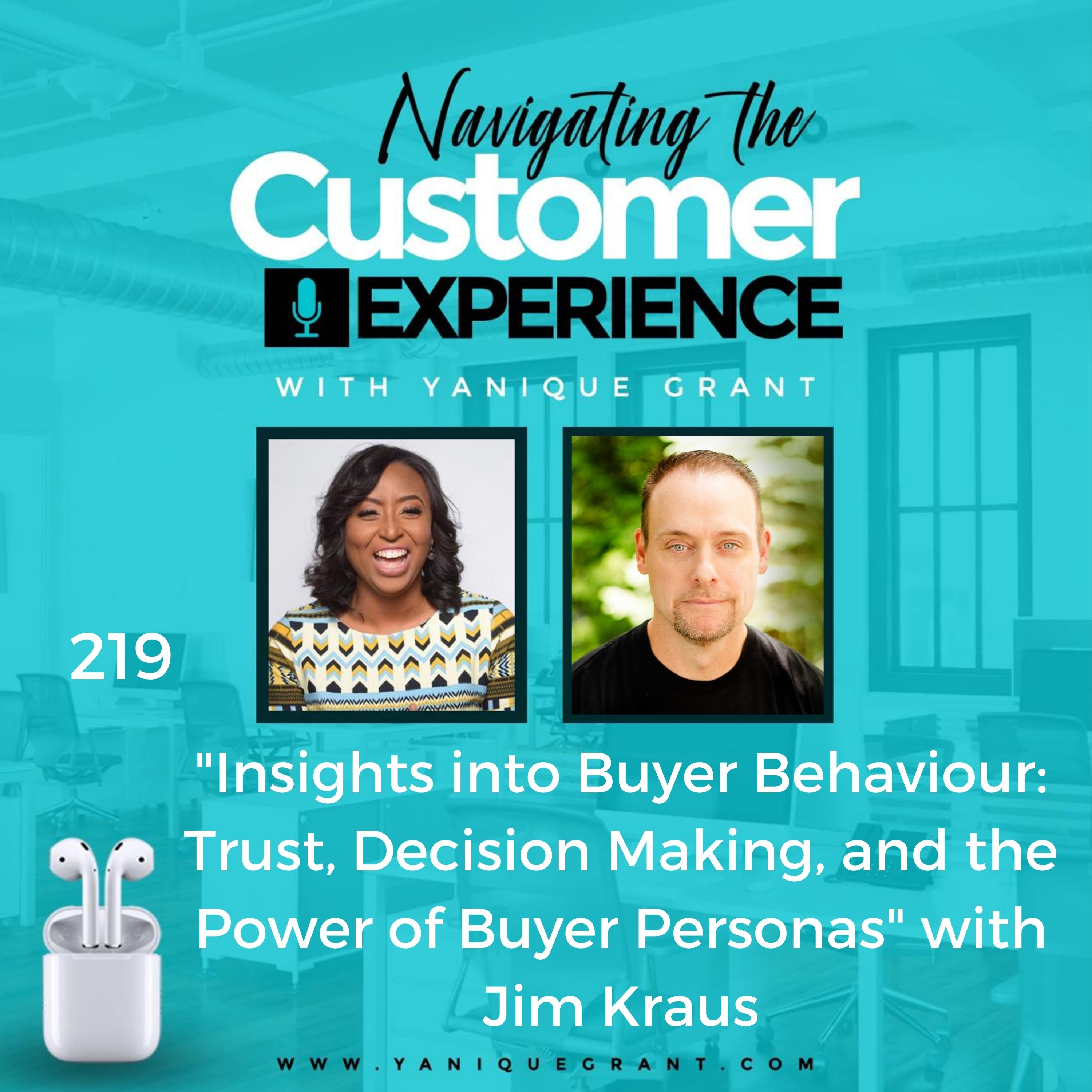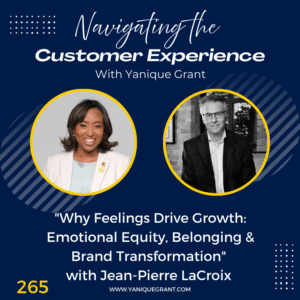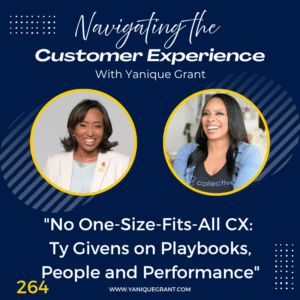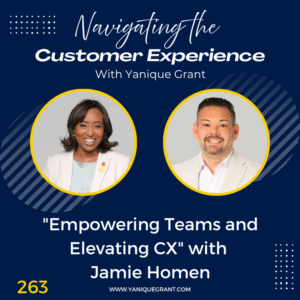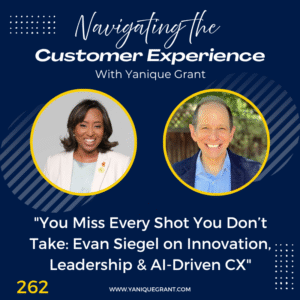Jim Kraus is the President of Buyer Persona Institute (BPI) and a leading authority on buyer personas and buying insights. BPI’s buyer persona research and workshop methodologies have become a gold standard for thousands of marketers in hundreds of companies worldwide that rely on these studies to reveal everything a prospective buyer needs to know and experience to have confidence in their solution. Marketers use these insights to develop strategies and messaging that drive more leads, improve conversion rates, and help sales hit their numbers.
In addition to his work at BPI, Jim is an avid blogger, author of the Buyer Persona Buzz newsletter, and is currently working on a second edition of the book Buyer Personas with BPI’s founder, Adele Revella. He also frequently speaks at events and podcasts to advanced thinking around buyer personas and buyer insights more broadly.
Outside of work, Jim enjoys travel, reading, sports, and spending time with his family.
Questions
· I always love to give our guests an opportunity for them to share in their own words, a little bit about how you got from where you were to where you are today.
· You mentioned that you just completed your manuscript for your second book, which should be released later this summer. Could you share a little bit with our listeners what can they expect? And maybe how it is that you decided to even write a second manuscript as a follow up to your first book.
· Could you share with us maybe two to three things that you believe are critical for an organisation to achieve that trust with customers if it is that you’re trying to attract that buyer and gain their trust?
· Now, as it relates to the buyer persona and the different aspects that make up that whole process. Apart from trust, what do you think is the key most important step or component in that process that can never be eliminated regardless of the industry that you’re in?
· Now, Jim, could you also share with our listeners what’s the one online resource, tool, website or app that you absolutely can’t live without in your business?
· Now, could you also share with our listeners, Jim, maybe one or two books that you’ve read, it could be a book that you read recently, or even one that you read a very long time ago, but it has had a great impact on you.
· Now, Jim, can you share with our listeners what’s the one thing that’s going on in your life right now that you’re really excited about? Either something you’re working on to develop yourself or your people.
· Where can listeners find you online?
· Now before we wrap our episodes up, we always like to ask our guests, do you have a quote or a saying that during times of adversity or challenge you’ll tend to revert to this quote if for any reason you got derailed or you got off track, this quote kind of helps to get you back on track. Do you have one of those?
Highlights
Jim’s Journey
Me: Now, I know we’ve read a little bit about your journey. And I always love to give our guests an opportunity for them to share in their own words, a little bit about how you got from where you were to where you are today.
Jim shared that his entire career has really been spent on understanding markets, understanding customers, understanding buyers, really just trying to provide market insights that help organizations make more informed decisions. He’s done it in a variety of places, both on the client side and as a consultant over the past three decades or so. Over the past 15 years, he has been a principal at a KS&R which is a full service market research firm. And they are working with Buyer Persona Institute, he’s leading by Buyer Persona Institute as division of KS&R right now. And they’re 100% focused on understanding buyers and more specifically, understanding the buying decisions that your prospective buyers make so that you can make more informed decisions around your marketing and sales strategies. So, his whole career has been focused on insights, right now it’s over the last couple of years in particular, been really focused on understanding prospective buyers to help marketing and sales.
What Customers Can Expect from the Second Book?
Me: Now, in our pre interview conversation, you mentioned that you just completed your manuscript for your second book, which should be released later this summer. Could you share a little bit with our listeners what can they expect? And maybe how it is that you decided to even write a second manuscript as a follow up to your first book.
Jim shared that the first book, Buyer Personas was written by Adele Revella, who is the founder of Buyer Persona Institute about 9 years ago. And him and her co-authored the second edition, this updated and expanded edition. And the main reason that they decided to update it is one, a lot has changed over the last 8 to 9 years.
But the foundation of Buyer Personas, they can talk a little bit about what a buyer persona is perhaps really hasn’t changed. At the end of the day, you’re trying to really understand buyers, what their wants and needs are and what experiences that they expect so they have full confidence buying from you, that’s essentially what you’re competing on, you’re competing on trust.
So, they developed the second edition of the book that will be out this summer, and they’re adding some things to it that they think will be really valuable for readers, even those that have picked up the first book many years ago. So, they’ve added more information about how to design a buyer persona study. They’ve added a lot of information about how to add to do quantitative survey research to get even more insight outside of your buyer persona. They’re spending more time in the second edition about how to use buyer persona insights and very tangible ways to improve marketing and sales performance and win more business.
The other place obviously, the fourth place that they’re spending more time on this second edition is just defining what a buyer persona is and isn’t, a lot of people have kind of a pre-conceived notion about a buyer persona is, they spent a little more time in this second book explaining why a buyer persona focus on understanding the buying decision is so much more powerful for marketers than just understanding a particular individual or role in the buying decision, which is kind of the traditional definition of a buyer persona.
Trust as a Critical Factor
Me: Now, in your review just know as it relates to the book, one of the things you mentioned that jumped out at me is that we’re all competing as it relates to the buyers that we’re trying to attract on trust. And so trust is a very big, and it’s a critical theme that I believe in customer experience is critical if you want to build retention, higher retention, and high loyalty in your business. So, could you share with us maybe two to three things that you believe are critical for an organization to achieve that trust with customers if it is that you’re trying to attract that buyer and gain their trust?
Jim shared that one of the things to think about is, a lot of times when you say the word buyer persona, people associate it with profiling a particular role in the decision process, right. Like maybe you have a buyer persona for a CIO if you sell tech products, or a finance manager if you sell financial products or services, etc. The challenge with that is, if you profile those roles, it doesn’t give you a lot of information about how do you actually gain the trust of the buyer who’s making a buying decision for a particular product and service.
So, let’s say he’s selling a CRM system, that’s his offering and he has a CIO buyer persona and it tells him information about certain demographics about what a typical CIO looks like maybe their overall challenges and priorities. But that doesn’t do very much once a CIO, for example, is involved in purchasing a CRM solution, because when they’re purchasing a CRM solution, what they care about most is two things, they care number one, that they’re going to achieve all the outcomes and benefits that they want from this investment, right. It’s an important investment. So, they care about, “Am I going to get everything that I want out of this?”
The second big thing, which is often overlooked is, “How do I avoid making a mistake?” Because again, a lot of times, particularly when you’re talking about higher consideration buying decisions where you’re looking at multiple options, there’s multiple influencers involved, it’s not just a transaction sale. A lot of times buyers are buying something like that for the first time, or they haven’t bought it in a long time, so they’re going to be anxious, they don’t want to make the wrong decision. They don’t want to go with something where something goes wrong.
So, what this all comes down to when you think about the whole thing, both elements of that, how do you give them what they need, reduce the risk of something going wrong.
Essentially, what you’re competing on is trust. Price aside. Who do they feel is going to do the best job of making them feel secure, that they’re going to get the outcomes that they really need and that nothing is going to go wrong?
So, that’s kind of the key and the buyer persona is that the methodology that they’d like to talk about defined is really based on understanding the buying decision and specific components of the buying decision in order to build that trust.
Key Elements/Steps in the Buyer Persona Process
Me: Now, as it relates to the buyer persona and the different aspects that make up that whole process, based on your experience and the fact that you’ve been in this industry and you’re a subject matter expert as it relates to that. Apart from trust, what do you think is the key most important step or component in that process that can never be eliminated regardless of the industry that you’re in?
Jim shared that when you’re talking about understanding the buying decision, there’s five different areas of insight that you really want to understand about the buying decision that your prospective buyers are making. So, whoever’s listening out there, think about your particular product or service or solution, and you may have multiple products and services, and that’s fine, but pick one and think about it.
There’s five things you really want to know about buyers that are making a buying decision about something that you offer and that your competitors offer too. Number one is you want to understand what they call the Priority Initiatives. Another way to think about priority initiatives, these are the triggers, these are the things that are getting buyers to initially start either looking for a solution like the one that you have.
The reason that’s so important to understand what those are is because you want to meet buyers where they are. So, when they’re first starting, and they’re anxious, and they’re learning about this whole category of whatever you offer, what is the starting point. So, when you talk about how you approach them, and your marketing and your sales approaches, any kind of way you interact with them, you want to know those triggers, so that you can really create that quick sense that, “Hey, here’s a company that really understands me.” That’s the first tick of the box as far as trust.
The second thing that you want to understand about this buying decision is they call it Success Factors. And these are outcomes, these are benefits, these are at the end of the day, what results do these buyers need from this important investment that they’re making. And you want to know that because obviously, you want to be talking about those. You want to be developing use cases, customer references, thought leadership, all kinds of things that you can do that speak to these key outcomes that they want. So, you want to know what those are implicitly.
The third thing you really want to understand is, they call it Perceived Barriers. The way to think about this one is, it is all the concerns and fears that buyers have buying your solution, not just yours, but all the alternatives you’re looking at, because they’re going to be anxious, they’re going to have trepidations.
· What are those things that are getting them nervous?
· What are the things that are eliminating providers and consideration?
So, you want to know what those are ahead of time so you can proactively address those things.
The fourth area insight, there’s five altogether, the fourth area is called Decision Criteria. And decision criteria is the traditional sales cycle. This is kind of middle later stages of the sales cycle when buyers are getting smarter about the category. And they’re starting to ask really specific questions, because now they’re really starting to make comparisons across the different alternatives that they’re looking at. So, decision criteria or deals, all the questions that your buyers are going to be asking you in some shape or fashion.
And the fifth and final one is Buyers Journey. So, everything he said earlier is kind of the mindset, it’s the needs, the fears, the attitudes, the buyers journey is
· What are the actual steps that your buyers take to identify who they’re going to consider?
· How do they whether down on their options?
· How do they make a final decision?
· What are those steps?
· Who are the influencers involved?
· And what are the information sources they use to really develop an opinion, and an evaluation of what they’re ultimately going to do?
If you take those five things, those five areas, they call them The Five Rings of Buying Insight that is so powerful, because if you would know those five things, you have everything you need to develop marketing and sales strategies to give buyers what they need to get to make very competent buying decisions and ultimately select you, which is the goal.
Me: For sure. So, give me that coin again, The Five Rings of buying Insight.
Jim shared, The Five Rings of buying Insight, they talked about it a lot in the book. It’s just a name they gave to it. But the five things that they talked about are really important.
App, Website or Tool that Jim Absolutely Can’t Live Without in His Business
When asked about online resource that he can’t live without in his business, Jim stated that that’s a good one. Well, he’ll say a couple of things come to mind. One is, by the way, the way to develop your buyer persona, and that’s going to lead to the answer to the question which will make more sense.
The best way to develop your buyer persona get those insights is to talk to recent buyers. What he means by recent buyers is buyers that have recently made the exact same buying decision that you’re trying to influence, these aren’t necessarily your current customers, these are individuals that have been involved buying a solution could be yours, could be a competitors in the past 6-12 months, and do in depth interviews with them so you understand their entire buying story from the moment they have a need for that particular solution until the time they make a final decision. The interviews are typically 30 to 40 minutes.
So, the reason number one it’s an important point because buyers are the experts, the only ones that can give you that information. And then that leaves him to answer the question which is they have an app that helps them analyze all those interviews.
So, when you’re doing those interviews, you often have 10-15 pages of unstructured data, right, text data. And they have an app that helps them make sense of all that data so that they can develop those insights. So, that’s a pretty critical app for them to use he would say.
The other really important one for them is they’ve been using different Gen AI tools more and more much like many of the listeners are using. They use a lot of common ones, they’ve actually developed one that they’re kind of using internally using major providers, they kind of use it as a testbed for their own and that’s been invaluable to help them analyze interviews a little bit better, it’s help them develop deeper profiles of buyers. It’s not the end all be all, it’s a supplemental thing. It’s enables them to do some things quicker, but he would say those are the two that come to mind.
Me: Would you mind sharing the app that helps you do the interview analysis?
Jim shared that that’s a proprietary app, so that’s one that they actually built in house so that they can analyse interviews through to The Five Rings of Buying Insight.
Me: Do you know if there’s any on open market that the listeners could tap into if they wanted to utilize such an application?
Jim shared that not that he’s aware of. So, The Five Rings of Buying Insight is something that they’ve developed and he doesn’t think there’s any tool that’s available to do that. He will say that you can use and they actually have this in the book, the second book, you can use any one of the commonly, whether it’s Chat GPT, or another one, you can use those to develop insights from these interviews to analyze across The Five Rings.
And in the book, that’ll be out in the summer, actually, they give some instructions for different queries that you can use to help you do that.
Me: Very good. So, the mere fact that you said there’s nothing on open market, I see that as an opportunity for all the listeners out there for anybody who wants to develop that tool, because we all know people are buying to solve their problems and clearly this seems like a problem that needs to be solved.
Jim agreed and shared that they’re looking at that too as well.
Books that Have Had the Biggest Impact on Jim
When asked about books that have had the greatest impact, Jim shared that one book that he’s read about that he really liked a lot, they actually reference it in their book is called The JOLT Effect: How High Performers Overcome Customer Indecision by Matthew Dixon and Ted McKenna, the book’s about a year and a half old about this point. And it’s really neat what they were able to do, COVID hasn’t had many silver linings, the one silver lining in this case was that they were able to work with a couple of other firms to record literally millions of sales interactions between sales people, and prospective buyers over a certain period during COVID because a lot of those conversations were taking place on Zoom, and WebEx and, and Microsoft Teams, and just different ways that they were able to record these conversations where they could never be recorded before.
What that allowed them to do is this great analysis on all this data. And they just found out a lot of really cool things that we intuitively know. One of the major things they write about in the book is, what high percentage of one of the biggest obstacles that salespeople face is the dreaded no decision where you’re working with a prospect, they go through this lengthy sales process, and then the prospect ends up buying nothing. Traditionally, there was always this belief that when somebody didn’t buy something, it was purely because they wanted to stick with the status quo, they said, “Hey, we did our assessment. And we said, you know what, we think what we’re doing now is better.”
What the study that Dixon and McKenna did that they described in The JOLT Effect showed was that that’s not really the case, that’s part of the time that’s true. The other majority of time is that buyers just can’t make a decision, they’re struggling to make a decision because it’s so hard to, it’s very difficult. And they’re very nervous about something going wrong, they don’t want to be the one to screw it up, saying, “What we have now may not be great, we all know it has problems, but I just feel like it’s a little bit too risky to buy anything.”
So, their analysis cast a light on this with hard data for the first time and the book also goes into different ways that you can get around that. And the reason it was so perfectly timed for them at Buyer Persona Institute, is it lines with the fact that you are competing on gaining a buyer’s trust and competence is the most important thing that you really need to do. So, that’s why that was a pretty important book for them in the last couple of years.
Me: As you were talking, just know, before I actually read my next question, just again, from the conversation flow. You mentioned that buyers sometimes don’t know, like they’re confused, the anxiety of making a decision. Would you find and I’m asking this question as a buyer myself, especially when it comes to food. Would you find that for example, in a restaurant business, if there are too many items on the menu, it’s harder to make a decision or do you believe that the less options that exist make it easier for the buyer to make a decision? What has your research shown where that is concerned?
Jim shared that it really depends on the category. So, you mentioned food, which is a very, very different category than if you’re buying a software solution for your company, for example.
So, the answer is it really depends. What he can tell you and what The JOLT Effect showed very clearly is that they’ve seen in all the research and all the interviews that they’ve done is that buyers are trying to make sense of the world, right. Whether you have a lot of choices or not, and a lot of choices exasperate the problem. But if you’re making a decision, especially one that you haven’t made in a while or in your case, if it’s a restaurant you haven’t been to in a while, you’re trying to orient yourself, so how can you educate the buyer as quickly and confidently as you can about this is what this world looks like right now, here’s your alternatives. Let me help you make sense of this.
And then once he’s educated you and help you make sense of it, how can he help you confidently make a decision to purchase something. So, it’s not always the number of choices, a lot of it is how those choices are communicated and how much effort is put into advising the prospective buyer and really helping them and guiding them making the decision. Because you could go walk in a restaurant that has 30 menu choices and they do things that make it very easy for you to understand what those are, you go into another restaurant using your example and it’s just kind of chaotic and they don’t make it easy for you to figure out what your choices are.
What Jim is Really Excited About Now!
When asked about something that he’s excited about, Jim stated that we mentioned that the book was a huge one, they just got the manuscript in about a week and a half ago. So, that was a really huge one that took a lot of his time over the last three months or so. So, that’s a big one that they’re really excited about. Aside from that, he would say one of the things that their team is working on that he’s excited about is it’s kind of practising what they preach. So, a lot of what they do is providing insights so that companies can make more informed marketing and sales decisions, and more focused relevant content and messaging for their prospective buyers.
They’re doing the same thing, you can always improve your value proposition, you can always make it easier for buyers to understand what is your differentiated value, what is the unique thing that you provide. Number one is helping buyers understand what are the options out there. And then number two, helping them understand very quickly, how are you different, there’s this world of whatever you’re offering is, how do you make it easier for them to figure out how you’re different and what does it mean for them? What is the value for them in that?
So, that’s something he’s kind of excited that they’re working on for their own business and just sharpening the saw, so to speak, as far as how they talk about their business, deliverables, proposals, all those kinds of things, they’re really taking a fresh look at all of that.
Where Can We Find Jim Online
Website – http://www.buyerpersona.com/
LinkedIn – https://www.linkedin.com/in/jimkraus
LinkedIn – Buyer Persona Buzz
Quote or Saying that During Times of Adversity Jim Uses
When asked about a quote that he tends to revert to, Jim shared that he has one that is probably a little dramatic. But it’s the point that he’s a big a huge history buff from Big World War II, Winston Churchill isn’t one of his favourite historical characters, historical figures and he has a quote that says, “When you’re walking through hell, keep walking.”
And he loves that quote because it’s so simple and it just basically means that from a business perspective, nothing we’re doing is hell right. But the point is, if you are going through times of adversity, or something’s not working out exactly how you want it, just keep walking down the path, if you have to divert the path a little bit, that’s fine. But don’t get stuck, just keep moving it along and things will get better, you will figure out there’s a solution to every problem, right. Just keep working the problem, you’ll arrive at it. So, that’s one he likes just because again, he’s a history buff, it’s a very simple one and it just says so much. So, of the bunch he can think of, that’d be the one he’d probably pick.
Me: Thank you so much for sharing, Jim. Now, we would like to extend our deepest level of gratitude to you, Jim, for taking time out of your very busy schedule and hopping on this podcast, and sharing with us your journey as it relates to developing the key elements of the buyer’s persona, talking about your new book that you’ve revamped along with your co-author and just really delving into what are some of the key aspects when you’re trying to attract the right type of buyer to ensure that the trust is there and to ensure that you are truly feeding into the specific needs and desires that that buyer is looking for and limiting as much anxiety that they may have as it relates to making that decision. So, I really enjoyed this conversation, I just want to say thank you so much.
Please connect with us on Twitter @navigatingcx and also join our Private Facebook Community – Navigating the Customer Experience and listen to our FB Lives weekly with a new guest
Links
• The JOLT Effect: How High Perfomers Overcome Customer Indecision by Matthew Dixon and Ted McKenna
The ABC’s of a Fantastic Customer Experience
Grab the Freebie on Our Website – TOP 10 Online Business Resources for Small Business Owners
Do you want to pivot your online customer experience and build loyalty – get a copy of “The ABC’s of a Fantastic Customer Experience.”
The ABC’s of a Fantastic Customer Experience provides 26 easy to follow steps and techniques that helps your business to achieve success and build brand loyalty.
This Guide to Limitless, Happy and Loyal Customers will help you to strengthen your service delivery, enhance your knowledge and appreciation of the customer experience and provide tips and practical strategies that you can start implementing immediately!
This book will develop your customer service skills and sharpen your attention to detail when serving others.
Master your customer experience and develop those knock your socks off techniques that will lead to lifetime customers. Your customers will only want to work with your business and it will be your brand differentiator. It will lead to recruiters to seek you out by providing practical examples on how to deliver a winning customer service experience!

